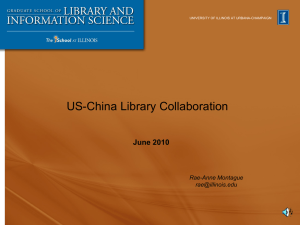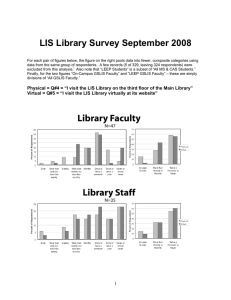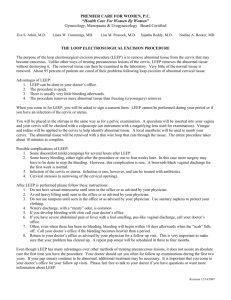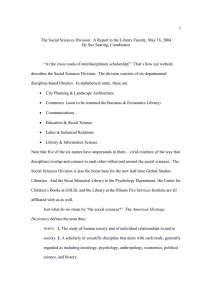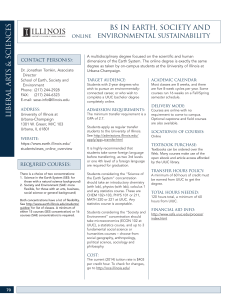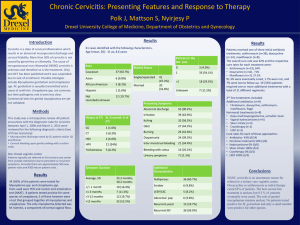Graduate School of Library and Information Science
advertisement
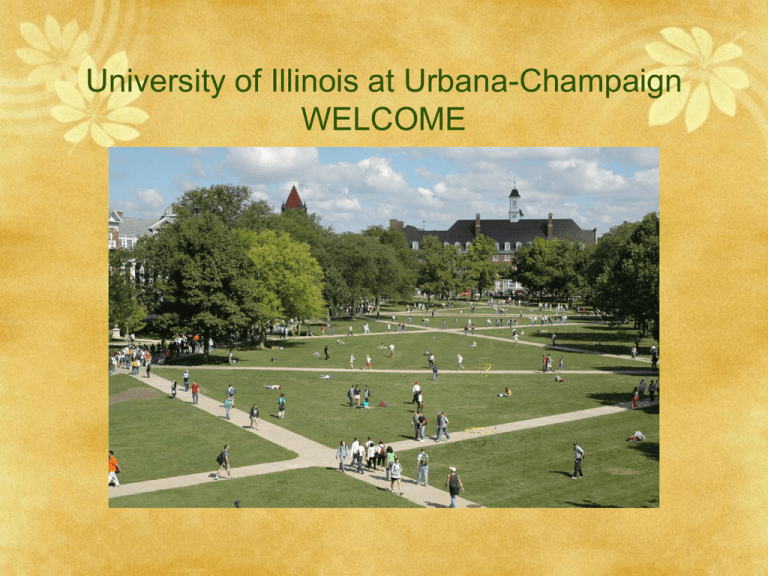
University of Illinois at Urbana-Champaign WELCOME Graduate School of Library and Information Science (GSLIS) Master of Science Doctor of Philosophy Certificate of Advanced Study + Informatics Minor and Community Credit ~800 students MS Flexible curriculum-- 40 credit hours with options to specialize in areas including K-12 librarianship, community college librarianship, digital libraries, data curation, special collections, community informatics, bioinformatics, and more. LEEP - GSLIS online option MS since 1996 CAS since 2002 Community credit since 2003 Emphasis on communication and collaboration Hybrid model: synchronous, asynchronous, and residential components New opportunities to connect faculty and students, engage in research, and enhance teaching and learning. LEEP Connections LEEP students have lived in all 50 states, Argentina, Bahamas, Belgium, Canada, China, England, France, Germany, Ireland, Italy, Japan, Mexico, Netherlands, New Zealand, Nigeria, Norway, Saudi Arabia,Thailand and the Virgin Islands. LEEP Retreat Themes Collaboration & community Interaction (many to many) Instructor dethroned Spontaneity and surprise New experiences Personalized learning 24/7 Reflection What makes LEEP work? The LEEP Retreat identified five key effective practices: ● Orientation, also known as ‘boot camp’ ● On-campus sessions (brief residencies each semester) ● Group work ● Synchronous sessions ● Order and organization “It’s the people...!” PhD Oldest program in the US (62 years) Research-oriented and interdisciplinary ~ 60 students; highly competitive admissions Minimum two year residency; typically 5 years of study Areas of emphasis include: history, social informatics, uses and users of info, youth literature and services, info org and access; economics and policy, info storage and retrieval Range of scholarly expectations Recent Dissertation Titles Scientific Data Collections: Use in Scholarly Communication and Implications for Data Curation (Cragin) Building Civic Literacy for Democracy: Russian Libraries and Civil Society (Knutson) A Trail of Stones and Breadcrumbs: Evaluating Folktales Published for Youth in the 20th Century (Del Negro) Measuring Information Quality (Stivilia) Automating Semantic Markup of Semi-Structured Text Via an Induced Knowledge Base: A CaseStudy Using Floras (Cui) GSLIS CPD: Networking, Collaboration and Lifelong Learning Foster community of professionals and opportunities for continuing professional development Increasing demand (alumni; options to stay connected) Need for technological competencies Engagement in community development efforts Includes workshops, CPLA, credit courses, study tours, certificates, etc. http://www.lis.illinois.edu/academics/programs/cpd Once again-welcome! About UIUC History ◦ One of the original 37 public land-grant institutions created within 10 years of the signing of the Morrill Act by Abraham Lincoln in 1862 ◦ Chartered in 1867 as the Illinois Industrial University; opened in 1868 Location ◦ 1,468 acres (286 major buildings) located in the twin cities of Champaign and Urbana (combined population: 100,000) ◦ 7.7 square miles situated about 140 miles S of Chicago, 120 miles W of Indianapolis, and 170 miles NE of St. Louis Budget ◦ Total Budget FY2009: $1.7 billion People @ UIUC Students ・ 41,917 total: 31,209 undergraduate and 10,708 graduate and professional Faculty ・ 3,087 tenured/track members Full-time Equivalent Employees ・ 3,920 academic; 4,498 support staff Alumni ・ 607,825 living graduates 22 Nobel laureates and 20 Pulitzer Prize winners affiliated with UIUC
